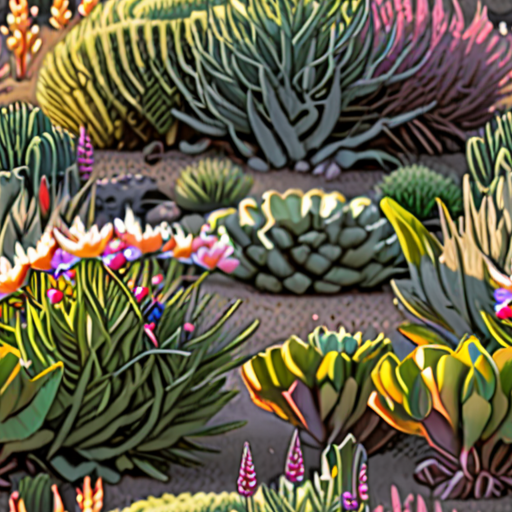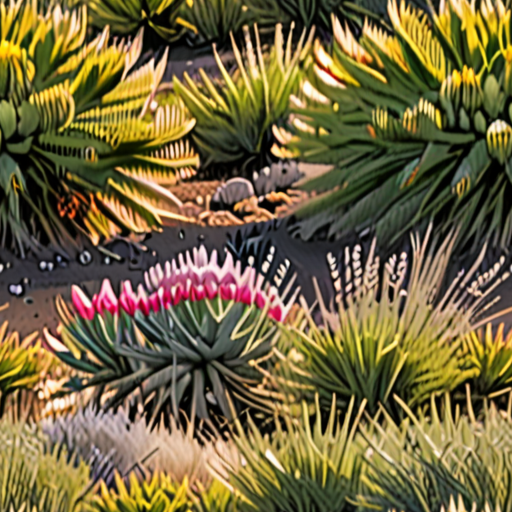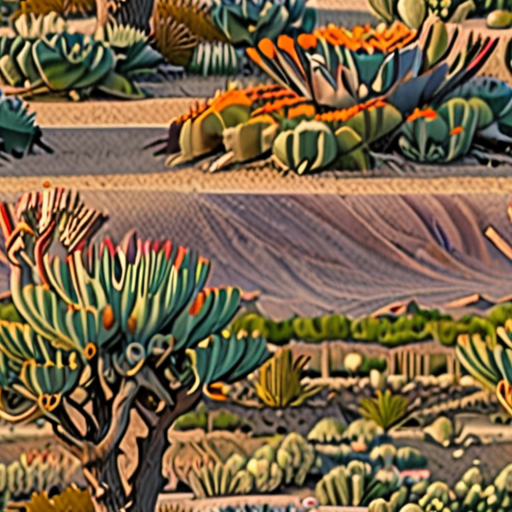As the arid climate of Central Oregon continues to pose challenges for local gardeners, creating a thriving water-wise garden has become increasingly essential for both environmental sustainability and personal resource management. By embracing the principles of water-wise gardening, homeowners can cultivate lush, vibrant landscapes while minimizing their water consumption and reducing their ecological footprint. In this comprehensive guide, we’ll delve into the intricacies of water-wise gardening, exploring its benefits, key concepts, and practical applications – from optimizing watering schedules to selecting drought-resistant plants and implementing xeriscaping techniques.
What is a WaterWise Garden?
A WaterWise garden is a type of garden that focuses on using plants and design principles to conserve water and reduce the need for irrigation. This approach involves selecting plants that are adapted to local climate conditions and require minimal watering, as well as incorporating features such as rainwater harvesting and efficient irrigation systems.
Key Principles of a WaterWise Garden:
- Selecting drought-tolerant plants that thrive in local climate conditions.
- Incorporating rainwater harvesting systems to collect and store rainwater for irrigation.
- Using efficient irrigation systems that deliver water directly to plant roots.
- Designing gardens with mulch and groundcovers to retain moisture and suppress weeds.
- Avoiding the use of lawns and instead opting for low-maintenance groundcovers.
Benefits of a WaterWise Garden:
- Reduces water consumption and helps to conserve this precious resource.
- Requires less maintenance and upkeep compared to traditional gardens.
- Creates a unique and beautiful landscape that showcases the beauty of drought-tolerant plants.
- Supports biodiversity and attracts pollinators and wildlife.
- Helps to mitigate the urban heat island effect and improves air quality.
Getting Started with a WaterWise Garden:
- Assess your climate and soil type to determine which drought-tolerant plants will thrive in your area.
- Choose plants that are suitable for your region and have a low water requirement.
- Incorporate rainwater harvesting systems and efficient irrigation systems to minimize water waste.
- Add mulch and groundcovers to retain moisture and suppress weeds.
- Consider replacing lawns with low-maintenance groundcovers.
Resources for Creating a WaterWise Garden:
For more information on creating a WaterWise garden, visit our website at OldSeed.org or check out these additional resources:
- The National Association of Landscape Professionals offers a wealth of information on WaterWise gardening practices.
- The US Environmental Protection Agency provides guidelines for creating a WaterWise garden.
- The Xeriscape Council of Colorado offers tips and resources for designing a WaterWise garden.
What is the Water Wise Concept?
The water-wise concept refers to a water and plant management practice that emphasizes using plants with lower supplemental water needs and grouping plants by water needs to encourage more efficient water use.
- This approach helps reduce water waste and promotes sustainable gardening practices.
- By selecting plants that require less water, gardeners can conserve water resources and minimize their environmental impact.
- Grouping plants by water needs allows gardeners to optimize watering schedules and prevent overwatering, which can lead to root rot and other problems.
Benefits of the Water-Wise Concept
- Conserves water resources
- Reduces water waste
- Promotes sustainable gardening practices
- Helps prevent overwatering and its associated problems
How to Implement the Water-Wise Concept
- Select plants that require less water
- Group plants by water needs
- Optimize watering schedules
- Maintain soil health through regular fertilization and mulching
Resources for Learning More
- Garden Center Magazine offers articles and tips on sustainable gardening practices, including water conservation.
- Old Seed provides resources and guides on heirloom gardening and sustainable agriculture, including water-efficient gardening techniques.
Is it Better to Water the Garden at Night or Morning?
When it comes to watering your garden, timing can play a significant role in determining the health and well-being of your plants.
- Morning watering is generally considered the best option, as it allows the plants to dry out slightly before the heat of the day sets in.
- This helps prevent fungal diseases and root rot, which thrive in moist environments.
On the other hand, nighttime watering can lead to a buildup of moisture around the roots and foliage, creating an ideal environment for pests and diseases to develop.
- Watering at night may also cause the leaves to remain wet for extended periods, increasing the risk of fungal infections and other problems.
- In contrast, morning watering gives the plants a chance to dry out during the day, reducing the likelihood of these issues.
As a gardener, it’s essential to find a balance between providing enough water for your plants and avoiding overwatering, which can be detrimental to their health.
Consider factors such as climate, soil type, and plant species when deciding the best time to water your garden.
For example, in hot and dry climates, it may be necessary to water in the early morning or late afternoon to minimize evaporation and prevent scorching of the leaves.
Ultimately, the key to successful gardening is to observe your plants’ needs and adjust your watering schedule accordingly.
By doing so, you’ll be able to provide the optimal conditions for your plants to thrive, regardless of whether you choose to water in the morning or at night.
At Old Seed , we recommend experimenting with different watering schedules to determine what works best for your unique garden setup.
Remember to monitor your plants’ responses and adjust your approach as needed to ensure the healthiest possible outcome.
Difference Between Waterwise and Drought-Tolerant
Waterwise and drought-tolerant are often used interchangeably, but they have distinct meanings in the context of gardening and landscaping.
While both terms refer to plants that can thrive in dry conditions, the primary distinction lies in their approach to water management.
- Waterwise: This term emphasizes efficient water usage through careful planning, design, and maintenance of gardens and landscapes. Waterwise gardens aim to minimize water waste and optimize water consumption, often incorporating features like rainwater harvesting, drip irrigation, and mulching.
- Drought-Tolerant: Drought-tolerant plants, on the other hand, are specifically bred or selected to withstand prolonged periods of drought without significant watering. These plants have adapted mechanisms to conserve water, such as deep roots, waxy leaves, or small leaf surfaces, allowing them to survive in dry environments.
In essence, waterwise focuses on the overall strategy for managing water in a garden, whereas drought-tolerant refers to the plant’s inherent ability to cope with dry conditions.
Key Differences:
- Approach: Waterwise is a holistic approach to gardening, emphasizing efficient water use, while drought-tolerant focuses on the plant’s adaptability to dry conditions.
- Scope: Waterwise encompasses the entire garden or landscape, including design, maintenance, and water management, whereas drought-tolerant applies specifically to individual plants or plant species.
- Goals: Waterwise aims to reduce water waste and optimize water consumption, whereas drought-tolerant seeks to enable plants to survive and thrive in dry environments.
Benefits of Waterwise Gardening:
- Water Conservation: By implementing water-efficient strategies, waterwise gardening helps reduce water waste and conserves this precious resource.
- Sustainability: Waterwise gardening promotes sustainable practices, minimizing the environmental impact of gardening and landscaping.
- Cost-Effectiveness: Waterwise gardening can lead to cost savings through reduced water bills and lower maintenance costs.
Choosing Drought-Tolerant Plants:
- Research: Research local plant species that are known to be drought-tolerant and suitable for your region’s climate.
- Plant Selection: Select plants with deep roots, waxy leaves, or small leaf surfaces, which are more likely to conserve water.
- Maintenance: Regularly inspect and maintain your drought-tolerant plants to ensure they receive adequate care and support.
Conclusion is Not Required
Understanding WaterWise Soil
As an eco-conscious gardener, I’m always looking for ways to create a more sustainable and resilient garden ecosystem.
- I’ve learned that WaterWise landscapes are designed to minimize the need for supplemental irrigation, which is essential for reducing water waste and conserving this precious resource.
- One key aspect of WaterWise landscaping is amending the soil with compost, which helps to improve its structure and increase its ability to retain moisture.
- Mulching is another technique used in WaterWise landscapes to reduce evaporation and prevent soil erosion.
- By incorporating these strategies, gardeners can create a more efficient and effective watering system that reduces the need for frequent irrigation.
In addition to these techniques, I’ve discovered that using drought-tolerant plants and implementing rainwater harvesting systems can further enhance the WaterWise qualities of my garden.
For example, plants like succulents and native wildflowers are well-suited to dry conditions and require less maintenance than traditional ornamental plants.
Rainwater harvesting systems collect and store rainwater for later use, reducing the demand on municipal water supplies and minimizing stormwater runoff.
By combining these strategies, I can create a truly WaterWise garden that not only conserves water but also promotes biodiversity and supports local ecosystems.
At Old Seed , we’re committed to helping gardeners like me create sustainable and thriving gardens that benefit both people and the planet.
Whether you’re just starting out or looking to upgrade your existing garden, we have the resources and expertise to guide you every step of the way.
So why wait? Start building your WaterWise garden today and join the movement towards a more sustainable future!
Most Drought-Resistant Plant
The most drought-resistant plant among the options is the cactus.
- Cacti have adapted to survive in arid environments through various mechanisms:
- They lack leaves, reducing transpiration and water loss.
- Their shallow root systems allow them to absorb water quickly before it evaporates.
- Cacti can store water in their stems, enabling them to survive extended periods without rainfall.
- Their spines provide shade, protecting the plant from intense sunlight and preventing water loss through evaporation.
- The waxy coating on their skin helps retain moisture, further contributing to their drought resistance.
In addition to these adaptations, succulent plants like aloe vera and agave are also known for their drought tolerance.
While there are several contenders for the title of most drought-resistant plant, the cactus stands out due to its unique combination of physical characteristics and survival strategies.
For those interested in learning more about drought-tolerant plants and how to incorporate them into their gardens, I recommend checking out our guide on drought-tolerant plants .
Conclusion
The cactus is undoubtedly the most drought-resistant plant among the options, thanks to its remarkable adaptations and survival strategies.
By understanding and incorporating these traits into our own gardening practices, we can create more resilient and sustainable gardens that thrive in challenging environmental conditions.





0 Comments